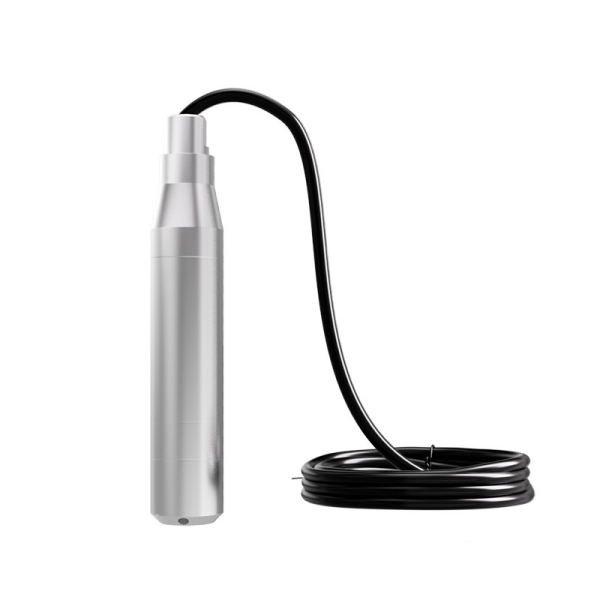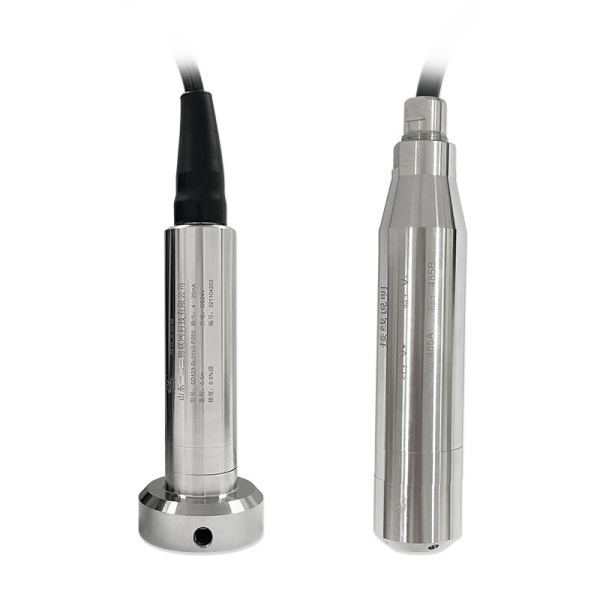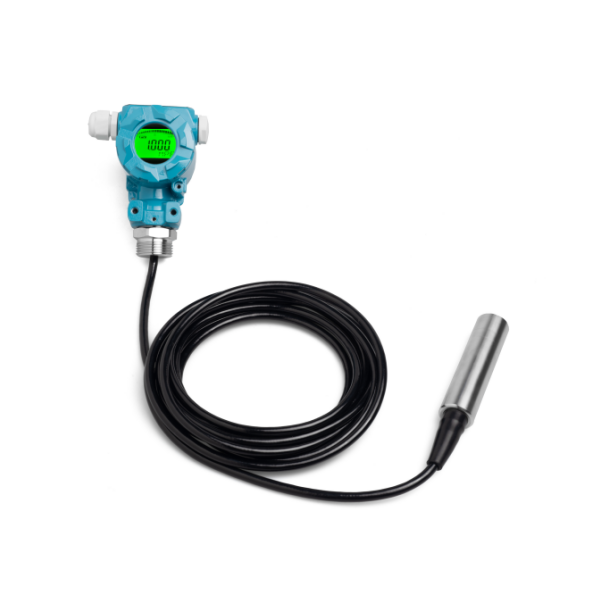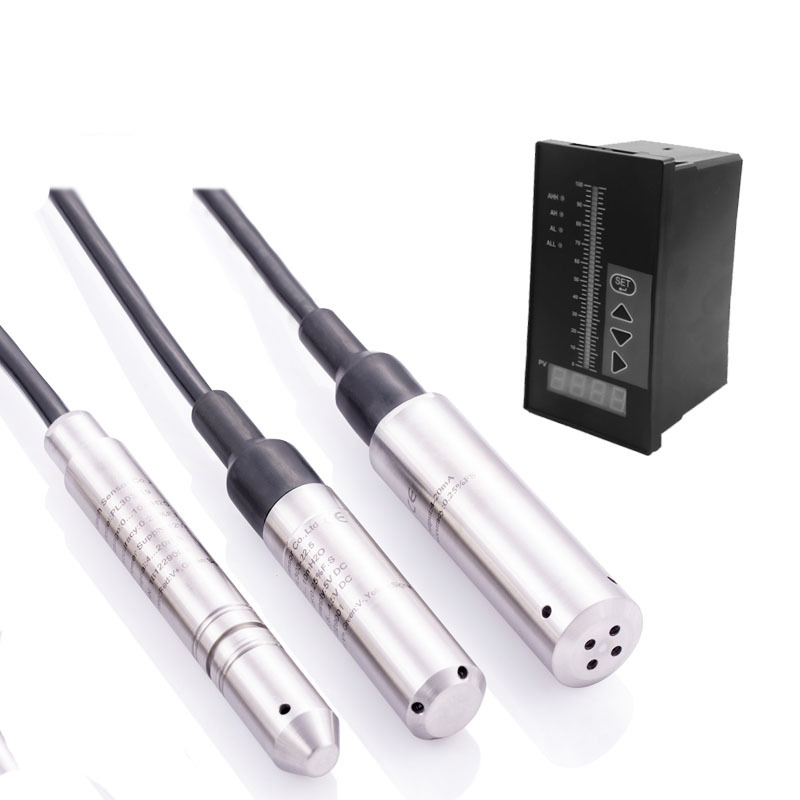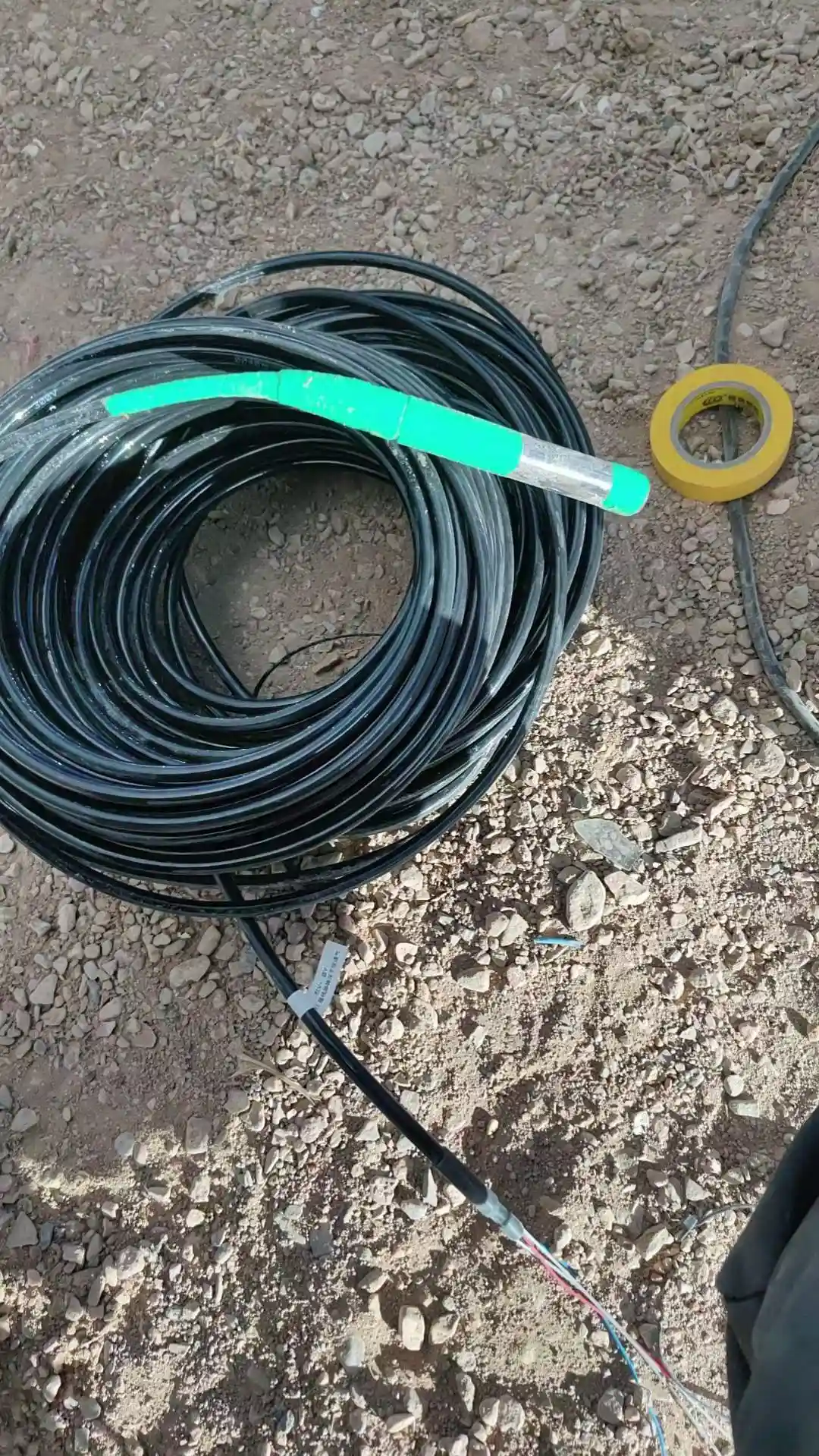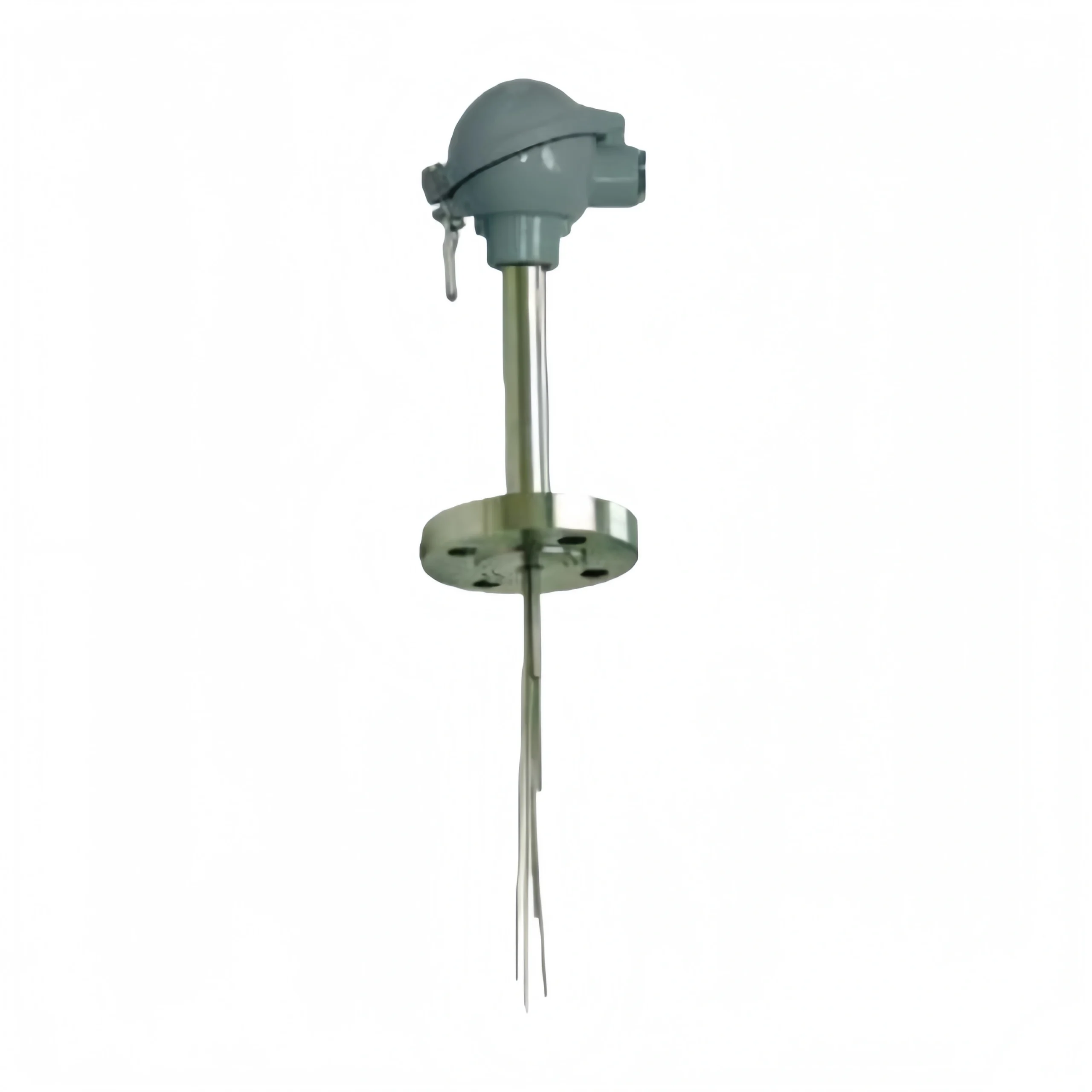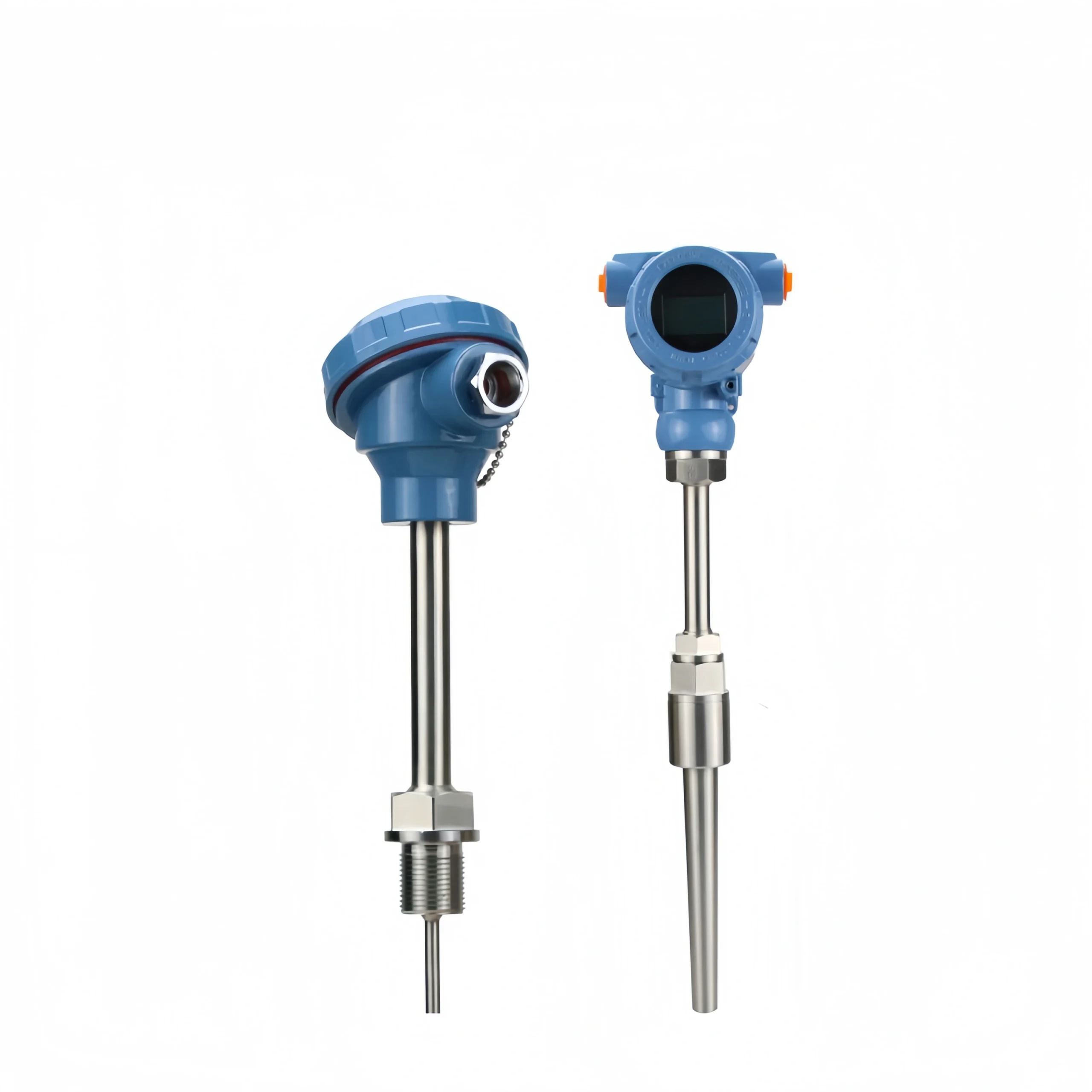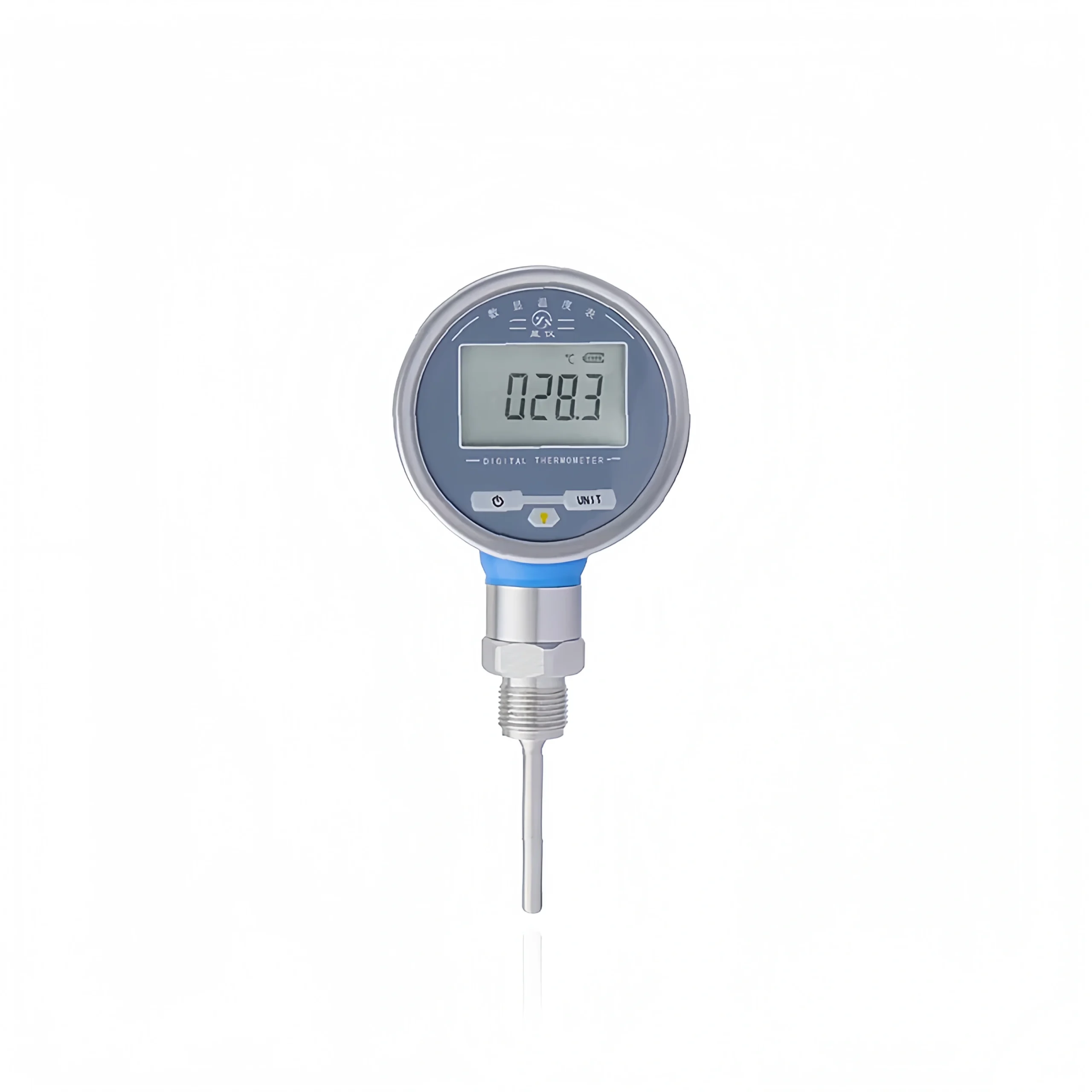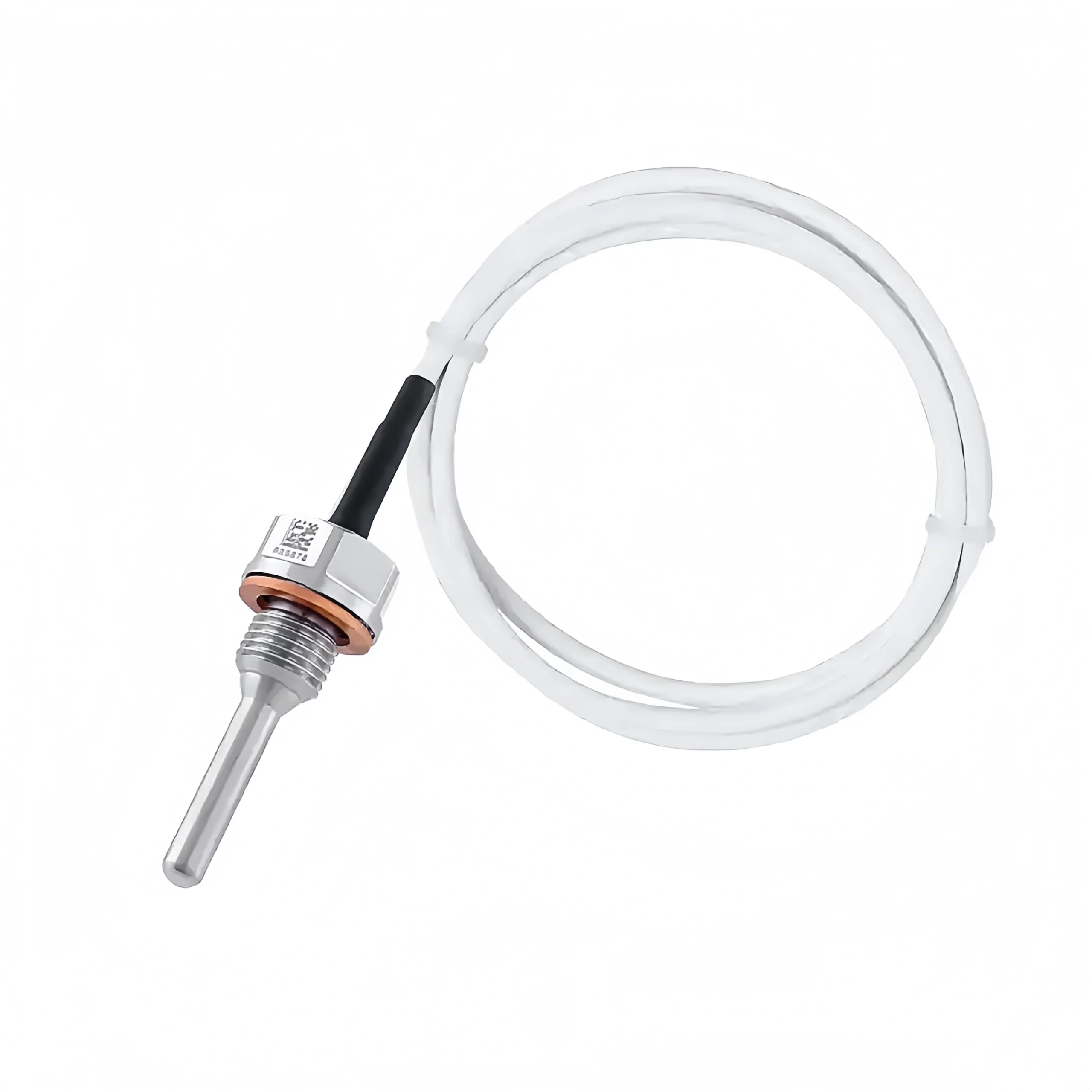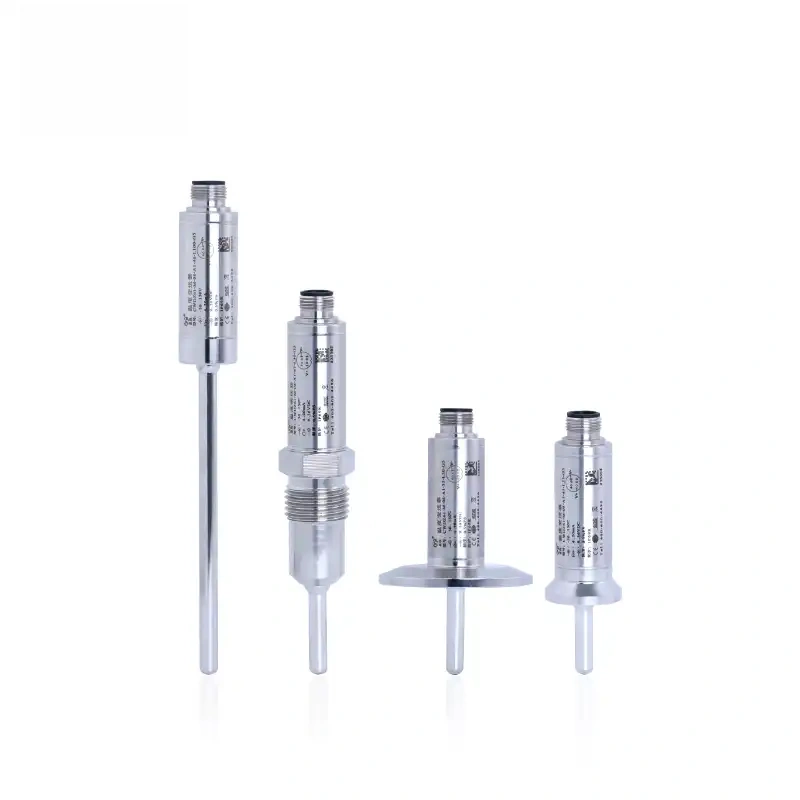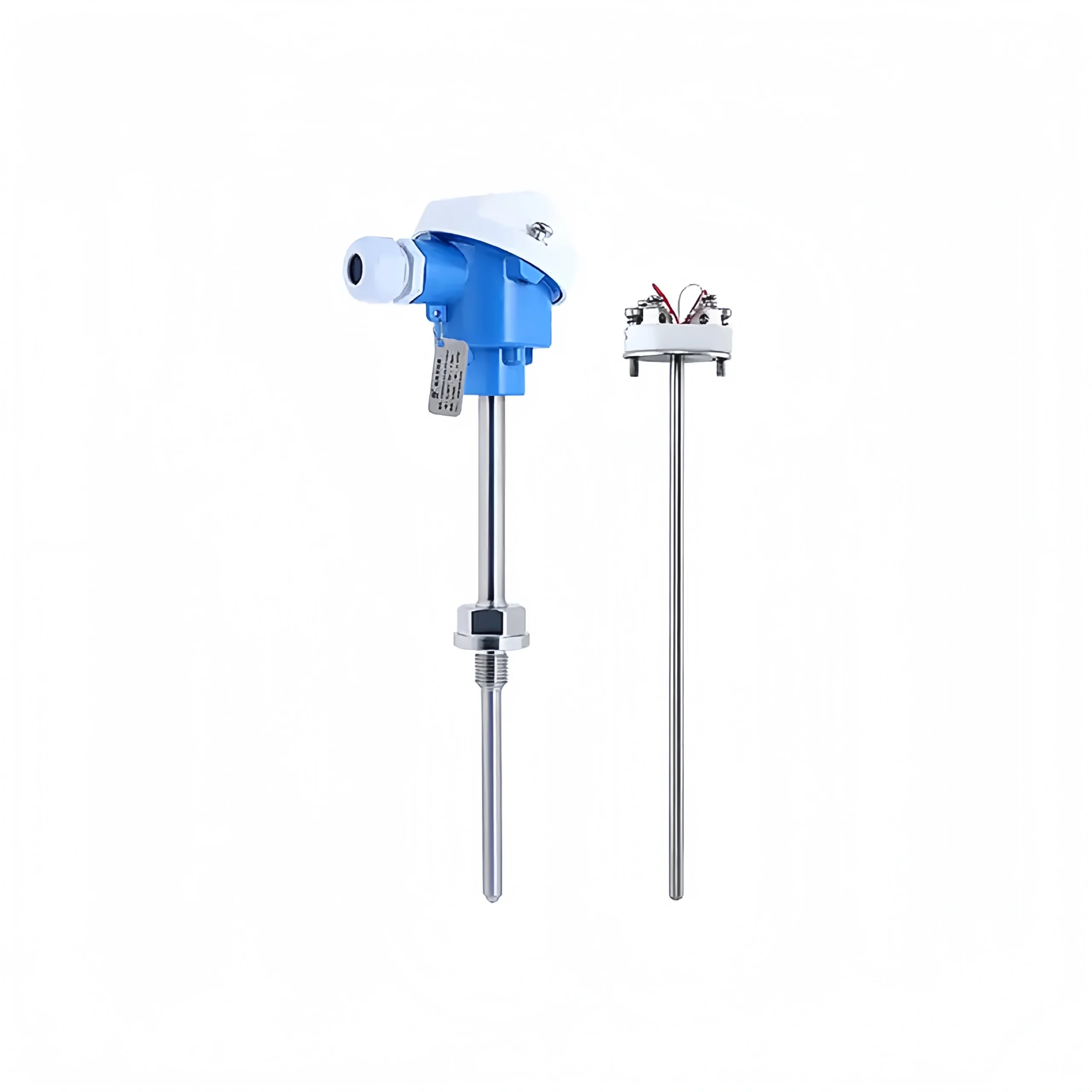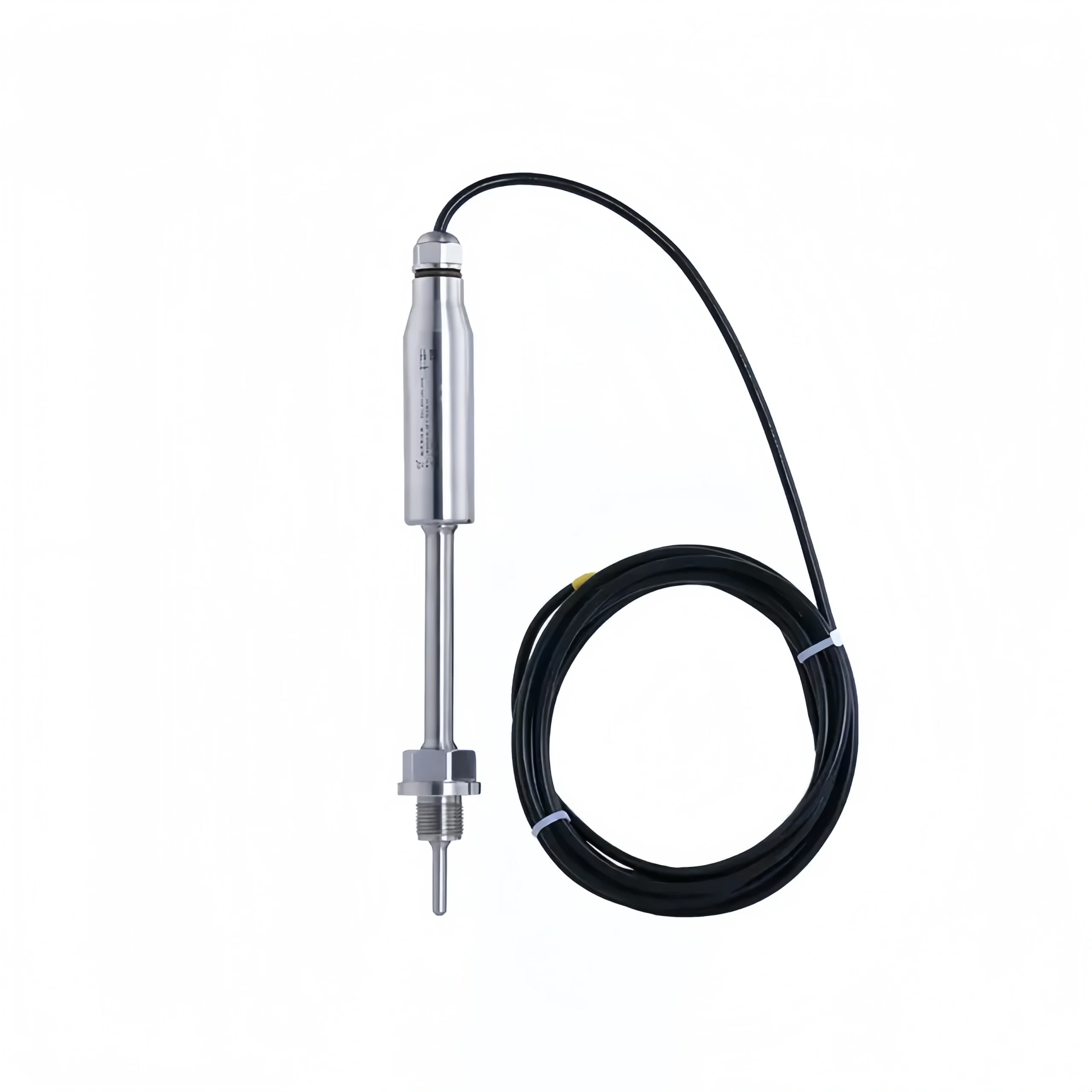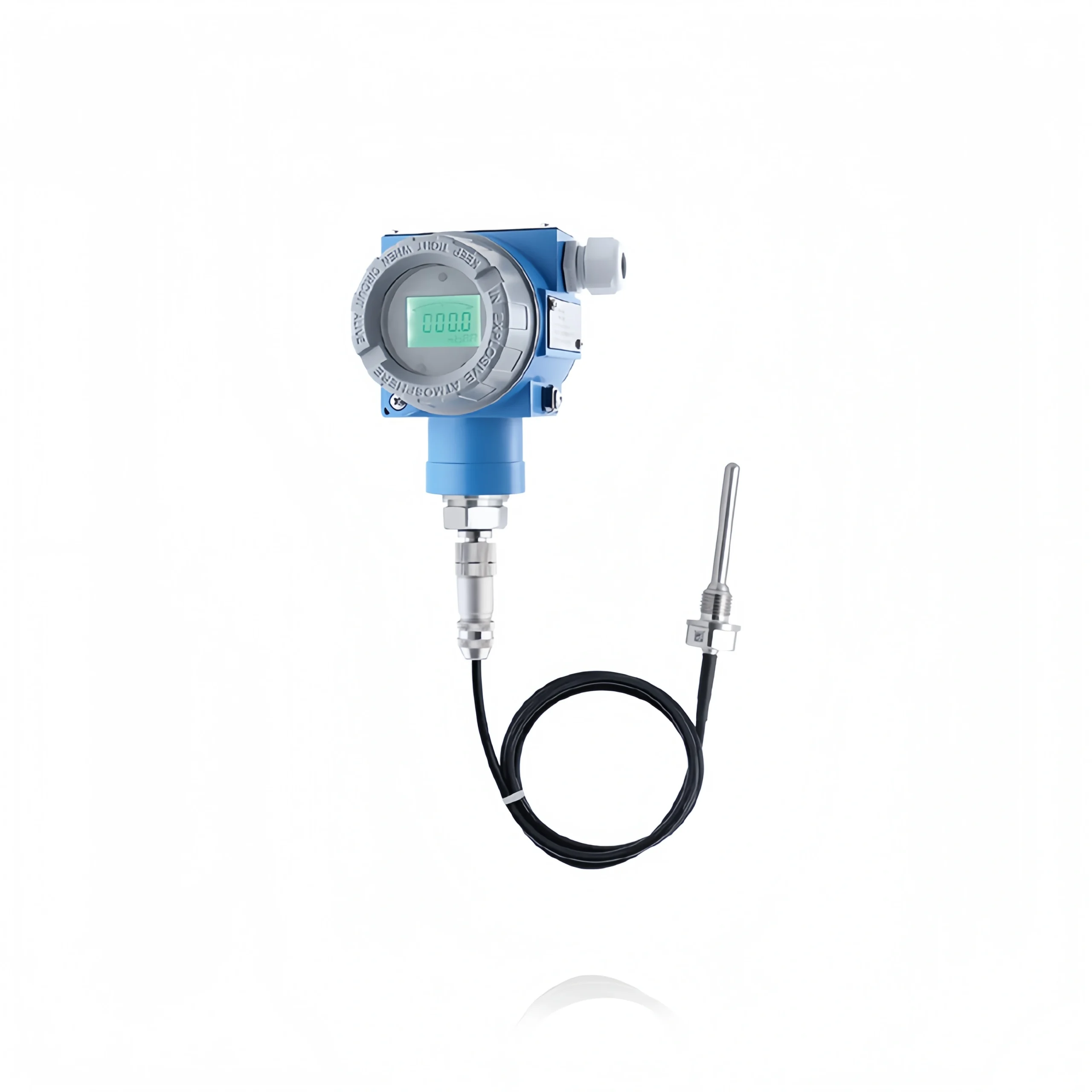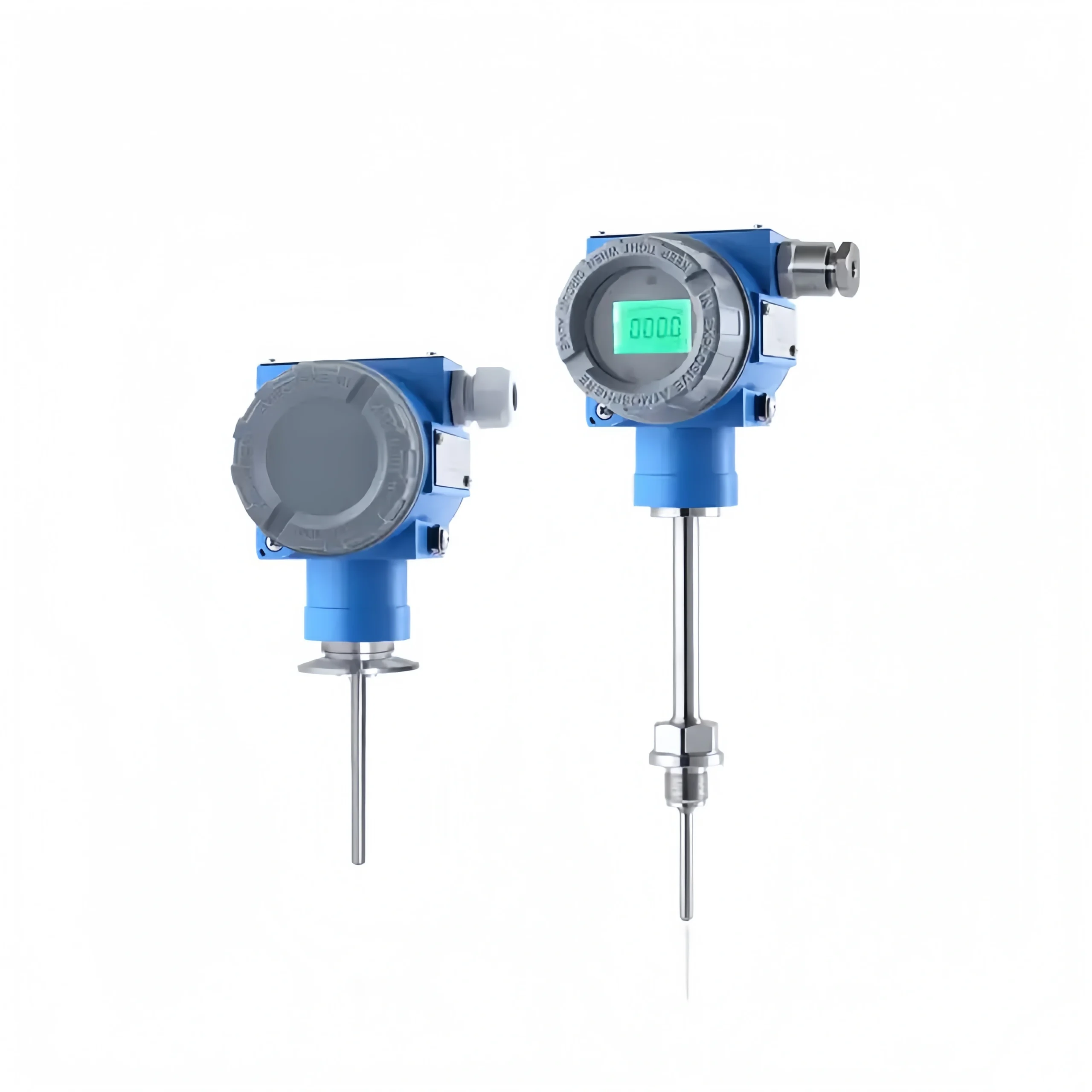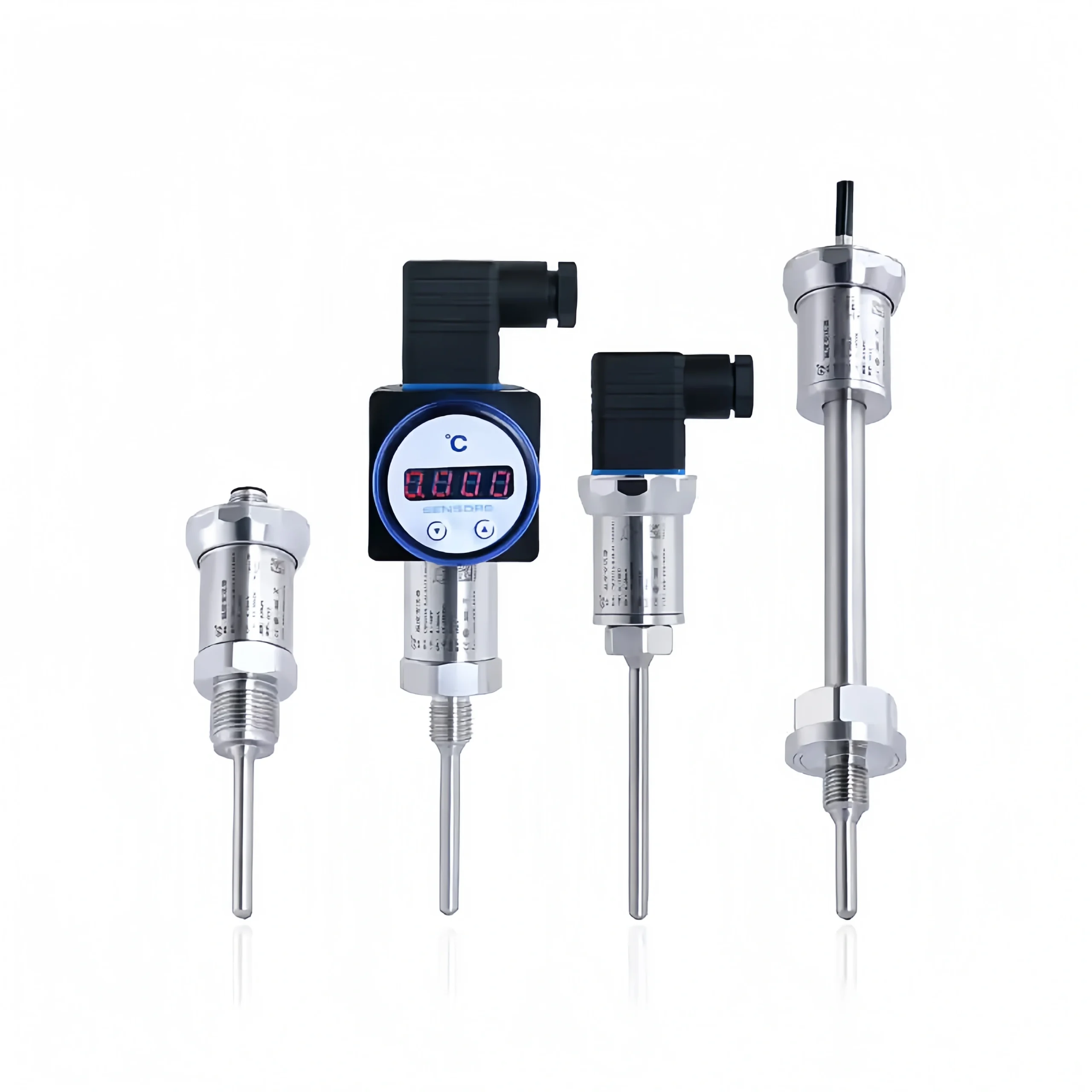Submersible Level Transmitter Working Principle
The working principle of a submersible level transmitter is relatively simple. It measures the pressure exerted by the liquid on the probe by inserting a pressure sensor (usually a stainless steel probe) directly into the liquid. This pressure is proportional to the height of the liquid, so the height of the liquid level can be obtained by measuring the pressure.
Submersible level transmitters are usually suitable for clean, non-corrosive liquids.
When the level transmitter is put into the measured liquid to a certain depth, the pressure on the sensor facing the liquid surface is: Ρ = ρ .g.H + Po
Where:
P: Pressure on the transmitter facing the liquid surface
ρ: Density of the measured liquid
g: Local gravity acceleration
Po: Atmospheric pressure on the liquid surface
H: Depth of the transmitter put into the liquid
At the same time, the pressure of the liquid is introduced into the positive pressure cavity of the sensor through the gas-conducting stainless steel. Then the atmospheric pressure Po on the liquid surface is connected to the negative pressure cavity of the sensor. To offset Po on the back of the sensor, the pressure measured by the sensor is: ρ .g.H. Obviously, by measuring the pressure P, the liquid level depth can be obtained.
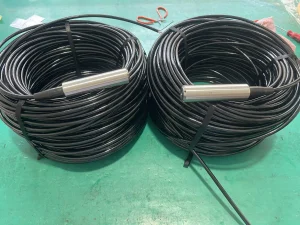
Submersible Level Transmitter Installation
Submersible Level Transmitter has three installation methods:
1. Flange installation: The flange size and flange standard can be configured according to user requirements. For example, ANSI DN50.
2. Bracket installation: Users can configure the installation bracket by themselves. Or ask us to configure it.
3. Thread installation: The installation thread can be produced according to user requirements. For example, G1.
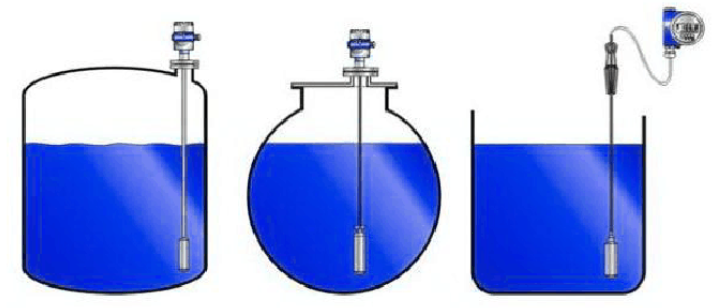
Installation tips:
In a conventional tank, such as a fire water tank, directly immerse the probe of the Submersible Level Transmitter in the water to the bottom, and then start measuring.
When the level meter should be installed in a static deep well or pool, a steel pipe with an inner diameter of about φ45mm (with several small holes at different heights to allow water to enter the pipe smoothly) is usually fixed in the water. Then put the static pressure Submersible Level Transmitter into the steel pipe and it can be used.
The installation direction of the transmitter is vertical. The installation position of the Submersible Level Sensor should be away from the liquid inlet and outlet and the agitator.
In the case of large vibration, a steel wire can be wound around the transmitter to reduce vibration and avoid breaking the cable.
When measuring the level of flowing or agitated liquid, a steel pipe with an inner diameter of about φ45mm (with several small holes at different heights on the opposite side of the liquid flow to allow water to flow smoothly into the pipe) is usually fixed in water. Then the static pressure immersion level sensor probe is placed in the steel pipe and it can be used.
Submersible Level Transmitter Wastewater
In wastewater treatment, the liquid level that needs to be measured includes wastewater, sludge, chemical solutions, etc. In the wastewater treatment system using automatic control, submersible level transmitters are used not only to measure the liquid level, but also to start and stop the interlocking pump in the automatic control and control the opening and closing of the valve.
When installing, pay attention to choosing a place where the fluid is relatively stable and the fluctuation is small. If the water flow impact and friction vibration cannot be avoided, an isolation pipe needs to be installed to reduce the water flow impact and ensure the accuracy and stability of the measurement.
When installing the submersible level transmitter, it is best to be 100mm to 200mm away from the bottom of the pool or tank to reduce the silt and medium sediment at the bottom of the pool or tank, which affects the accuracy of the measurement.
In an environment with poor water quality, especially when the medium has a lot of suspended matter and impurities, it is easy to block the pressure hole, affecting the measurement accuracy. The level meter needs to be cleaned and the pressure hole dredged regularly to ensure accurate and stable measurement.
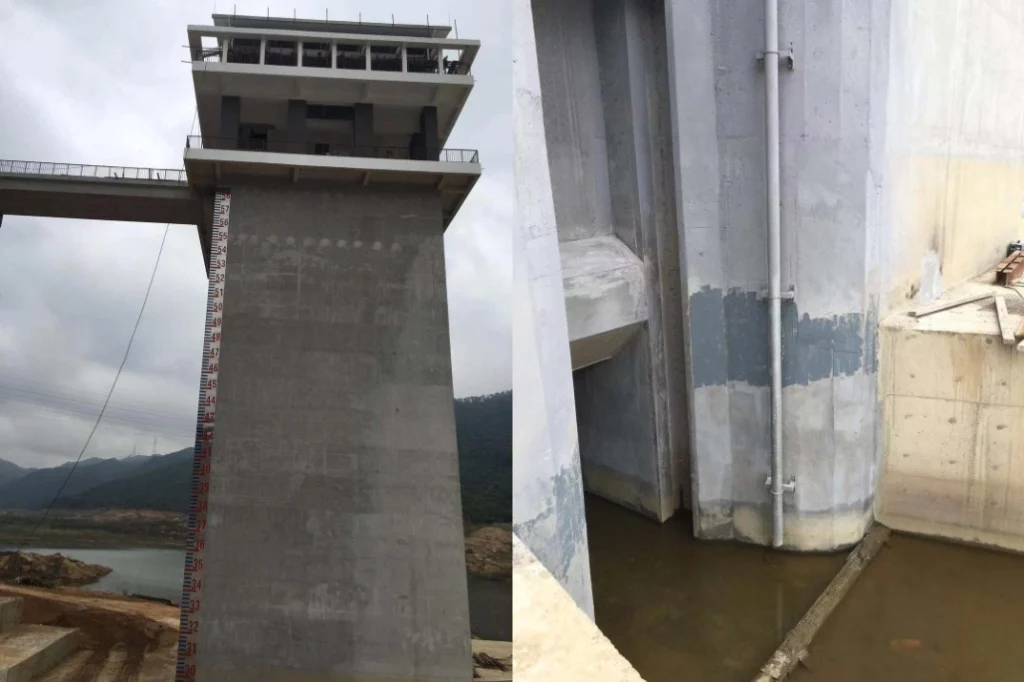
Submersible Level Transmitter | Hydrostatic Sensor - Sino Insts
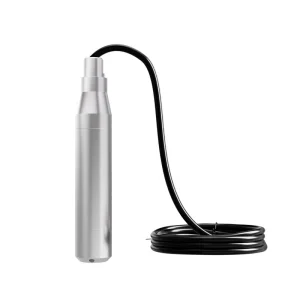
The working principle of a submersible level transmitter is relatively simple. It measures the pressure exerted by the liquid on the probe by inserting a pressure sensor (usually a stainless steel probe) directly into the liquid. This pressure is proportional to the height of the liquid, so the height of the liquid level can be obtained by measuring the pressure.
Product SKU: Submersible Level Transmitter | Hydrostatic Sensor
Product Brand: Sino-Inst
Product Currency: USD
Product Price: 109
Product In-Stock: PreOrder
5

